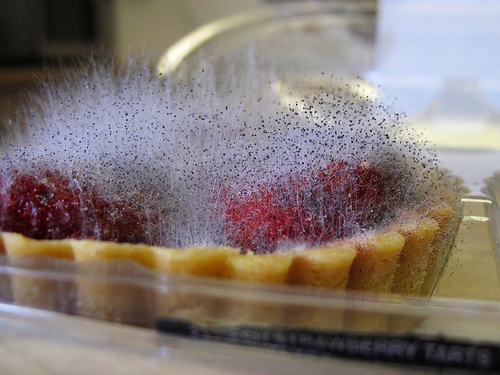Nobody wants mold growing in their home. Not only is it unhealthy, it can quickly spread and create lots of damage in if left unchecked.
Mold is a microscopic fungus that reproduces rapidly. It introduces spores to the atmosphere because that’s how it spreads. When it enters our lungs it affects our health by causing potential chronic bronchial problems. It’s also an unhealthy sign, because it indicates that damp’s around. Knowing how it enters your basement is a good start to preventing it from taking hold there. You just need to control the dampness in your home.

Mold’s Favorite Entry Points
The tiny spores love humidity, warmth and moisture, because these are the conditions in which they thrive and multiply. A basement is an ideal place for this, especially when the heater’s on. When mold senses that conditions are suitable for reproduction, it can appear through the tiniest entry-point, and begin colonizing your home.
Water oozing in from window wells is a perfect starting point, because mold can permeate directly from the garden where it’s growing wild outside already. It’s not good enough to try to seal a leak from inside the cellar though. You must get back to basics by clearing out the drain, and caulking up the outside window frame.
Don’t ignore water stains when you see on them the upper walls. They’re not supposed to be there because the joints between the house and basement are above the ground. Mold will soon follow. You need to take action. Have you had the builders in recently? What’s the gardener being doing lately outside?
Further down the walls you may see moisture entering past pipes and through cracks. This is harder to resolve because you can’t reach the wall outside. Stop mold in its tracks. Clean the area thoroughly with a detergent solution. When the area’s nice and dry, seal off the opening with a jointing compound. You’re going to have to redo this every year, because moisture tends to dissolve the sealant.
If you see water seeping through at ground level – either through the wall joints at the edges or welling up from below the floor – then you have a serious problem that needs immediate attention. Delaying action can eventually add structural damage to your list of woes.
The Family Home Upstairs – Mold’s Secret Ally
If you have mold upstairs – no matter how little there may be – then there are fungi spores in the air that follow you everywhere you go. Just a simple matter of a child popping down to fetch a favorite toy (or kitty going off on an exploratory excursion) can introduce the problem to your basement. The bottom line is that mold spores like to attach themselves to any damp material and will quickly spread if not addressed.
Your biggest risk areas in the house are anywhere where there’s water or humidity (or both). Bathrooms, showers and kitchens are among mold’s favorite camping spots. Attics with water leaks are also a mold favorite. Closets are also in high demand especially if they’re against a cool outside wall, or you hang damp clothes in them. An unvented clothes dryer is still the number one favorite though. Here you need to implement a daily cleaning routine.
DOES MOLD EVER GO AWAY?
The answer, ironic though it may seem, is that it only goes away if you never admit in in the first place. Most modern internal heating systems make it almost impossible to get rid of completely. If you keep your hand to it you should be okay. If it gets out control though, you may want to call in a professional.
Attached Images:
- License: Creative Commons image source
Gemil Lacroix is a Toronto mold inspector and an environmental contracting consultant. You can also find him on Twitter @G1000inspections, where he likes to tweet about indoor air quality and home safety tips.

